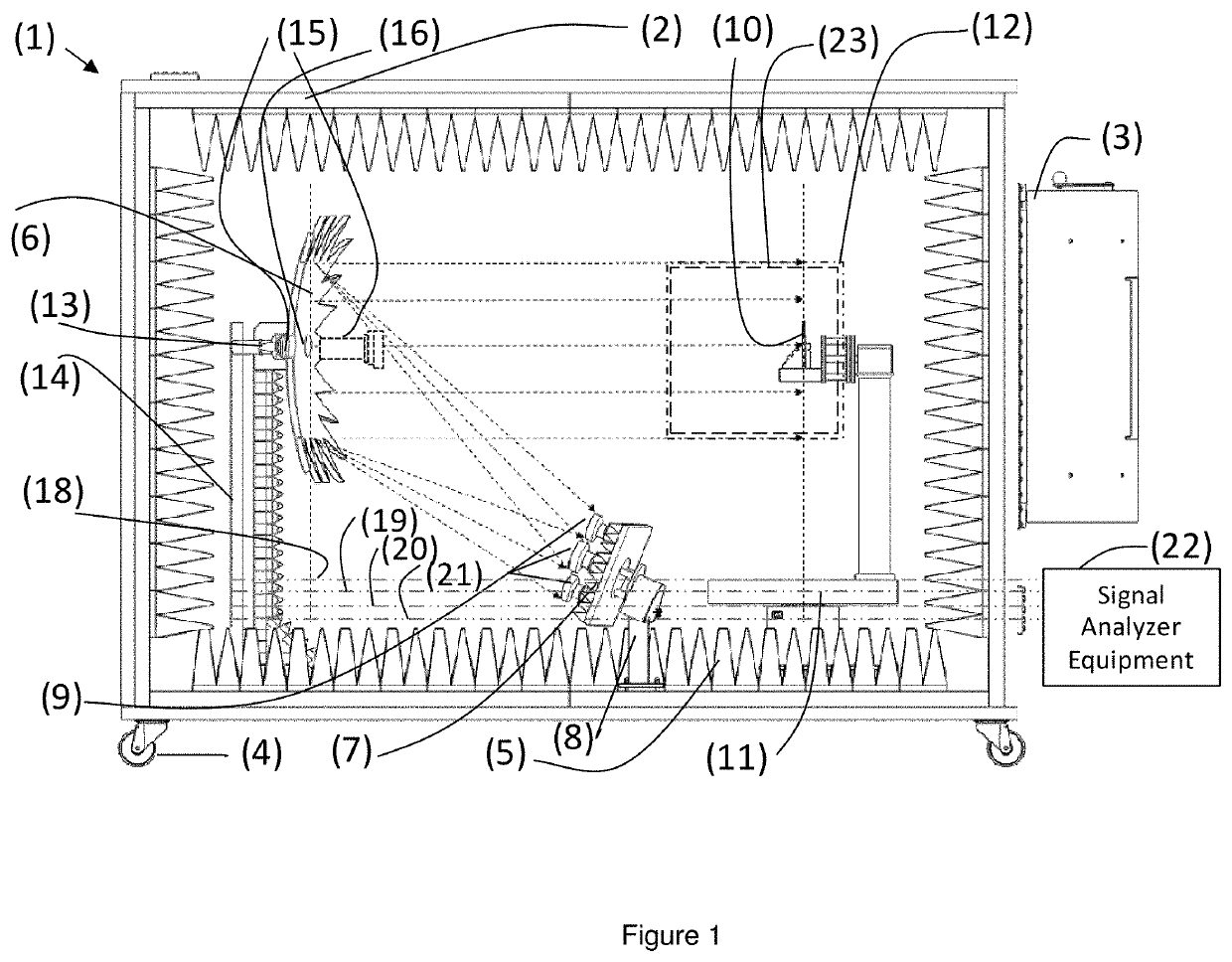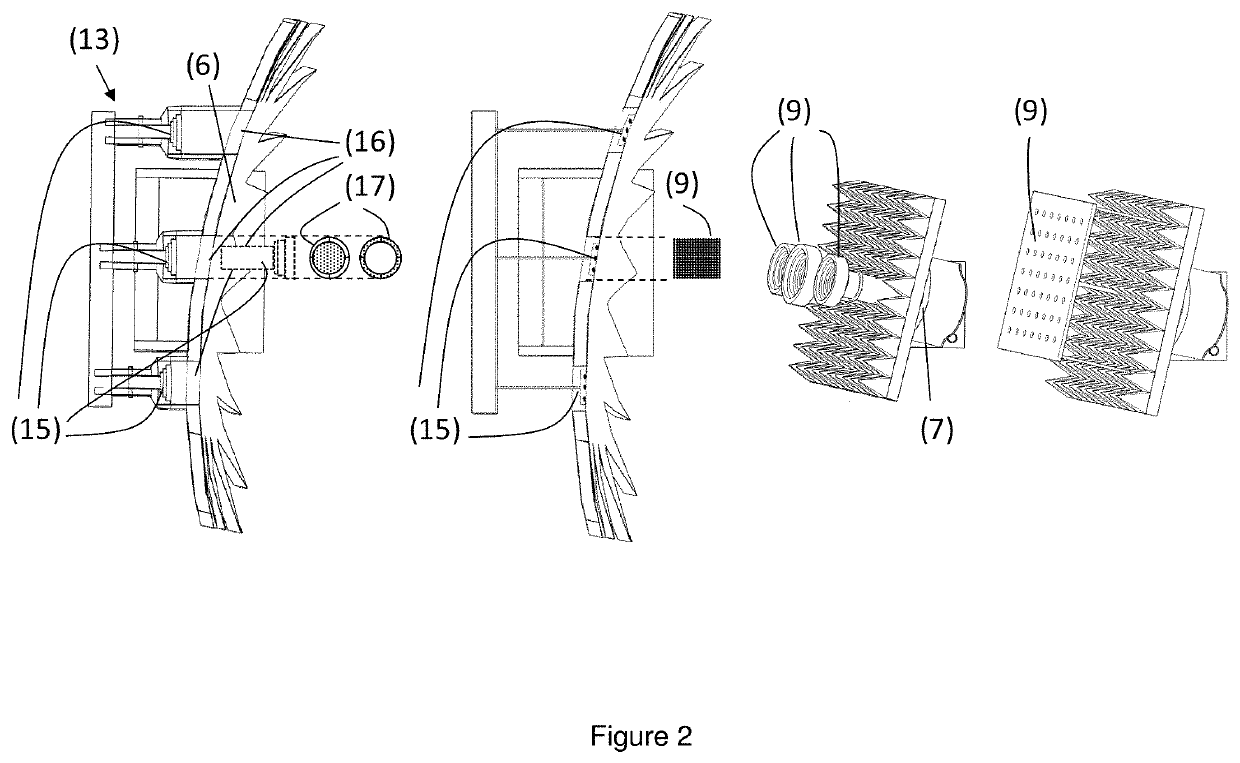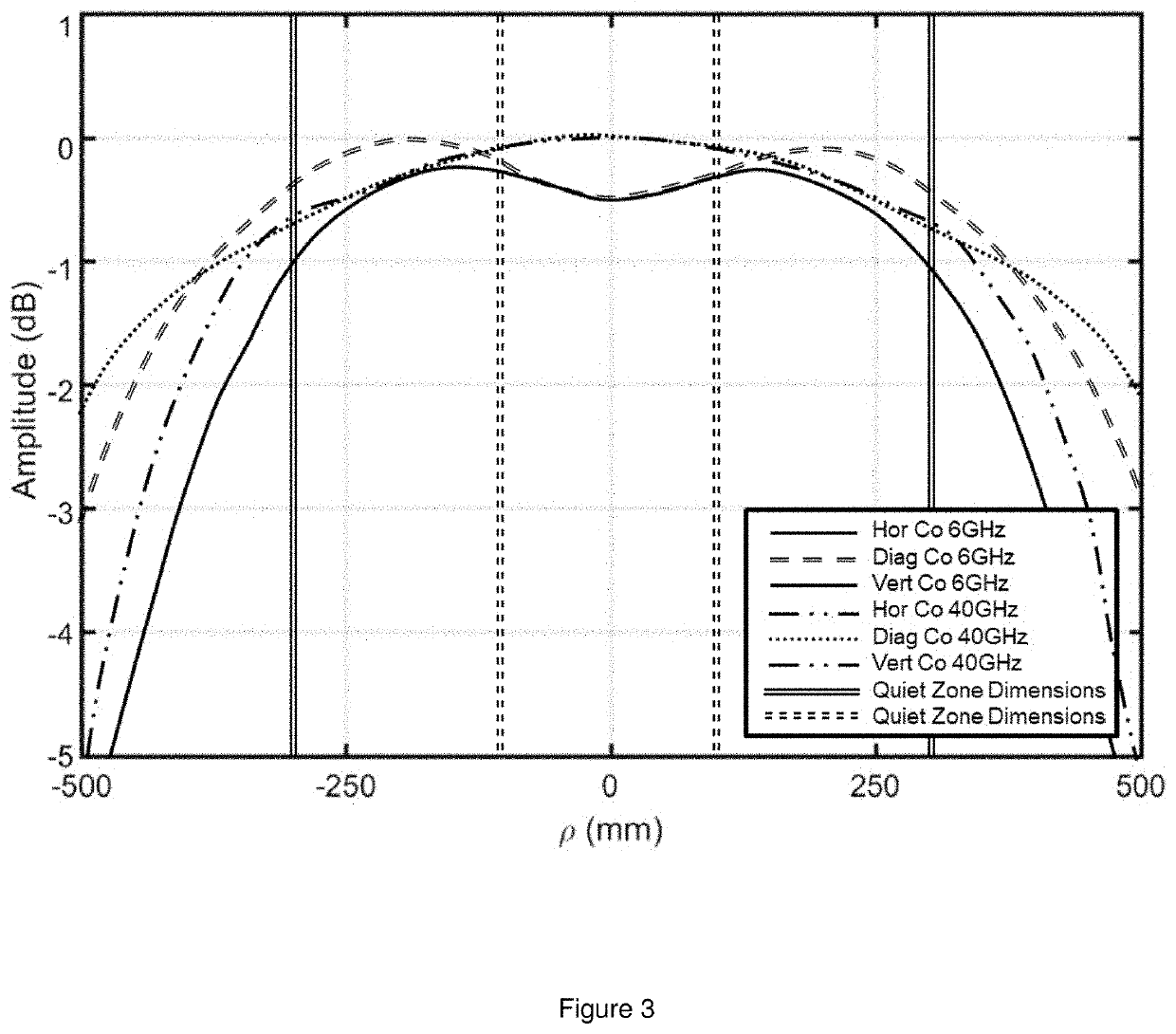Test system for compact multi-band, near-field to far-field and direct far-field
- Summary
- Abstract
- Description
- Claims
- Application Information
AI Technical Summary
Benefits of technology
Problems solved by technology
Method used
Image
Examples
example 1
mpact, Near-Field-to-Far-Field and Direct Far-Field Test Range where all Wavefronts are Planar
[0026]In the favourite mode of the hybrid compact, near-field-to-far-field and direct far-field test range system the number of dual-polarized antenna elements at the primary feed source antenna set is one of the corrugated circular waveguide horn or printed array type, operating at the 5G FR2 mmWave frequency range, the number of antenna elements at the secondary feed source antenna set is one, of the type corrugated circular waveguide horn or printed array type, operating at the 5G Sub-6 GHz frequency range, the offset reflector has serrated edges with dimension of 1.2 m from tip to tip and the quiet test zone is a cylinder of 30 cm long by 30 cm in diameter, in which up to four different wavefronts in their far-field are provided. In this favourite mode of the hybrid compact, near-field-to-far-field and direct far-field test range system all wavefronts are in the far-field, and no near-t...
example 2
mpact, Near-Field-to-Far-Field and Direct Far-Field Test Range where not all Wavefronts are Planar
[0032]In the favourite mode of the hybrid compact, near-field-to-far-field and direct far-field test range system the number of dual-polarized antenna elements at the primary feed source antenna set is three of the corrugated circular waveguide horn or printed array type, operating at the 5G FR2 mmWave frequency range, the number of antenna elements at the secondary feed source antenna set is one, of the type corrugated circular waveguide horn or printed array type, operating at the 5G Sub-6 GHz frequency range, the offset reflector has serrated edges with dimension of 1.5 m from tip to tip and the quiet test zone is a cylinder of 60 cm long by 60 cm in diameter, in which up to eight different wavefronts in either their far-field or near-field are provided. In this favourite mode of the hybrid compact, near-field-to-far-field and direct far-field test range system not all wavefronts are...
PUM
 Login to View More
Login to View More Abstract
Description
Claims
Application Information
 Login to View More
Login to View More - R&D
- Intellectual Property
- Life Sciences
- Materials
- Tech Scout
- Unparalleled Data Quality
- Higher Quality Content
- 60% Fewer Hallucinations
Browse by: Latest US Patents, China's latest patents, Technical Efficacy Thesaurus, Application Domain, Technology Topic, Popular Technical Reports.
© 2025 PatSnap. All rights reserved.Legal|Privacy policy|Modern Slavery Act Transparency Statement|Sitemap|About US| Contact US: help@patsnap.com



